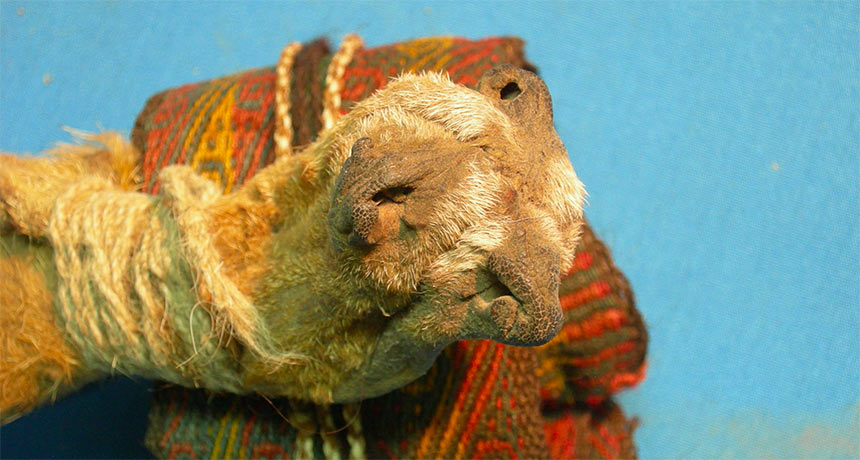Elven World Healing Arts Community
Psychics and Shamans
A group for those who work as Psychics Mediums, and Shamans and those wishing to learn more about the subject.
An ancient pouch reveals the hallucinogen stash of an Andes shaman.
The find had traces of mind-altering chemicals, including some used to make ayahuasaca.
A leather bag stuffed with ritual items, found high in the Andes Mountains, has yielded rare clues to South American shamans’ hallucinatory visions around 1,000 years ago.
One artifact in the radiocarbon-dated bag, which is a pouch stitched out of three fox snouts, contains chemical traces of five mind-altering substances obtained from at least three plants, say bioarchaeologist Melanie Miller of the University of Otago in Dunedin, New Zealand and her colleagues. Chemical residues include two primary ingredients of ayahuasca, a vision-inducing concoction still used by ritual specialists in native South American communities, the scientists report online the week of May 6 in the Proceedings of the National Academy of Sciences. Cocaine residue suggests that the fox pouch also held coca leaves.
The researchers found the ancient ritual bundle in a Bolivian rock-shelter called Cueva del Chileno. Along with the fox pouch, the leather bag contained two carved wooden tablets used for snorting, or snuffing, powdered substances, a carved snuffing tube, a pair of llama-bone spatulas, a woven band thought to be a headband and two dried plant fragments tied to wool and fiber strings.
Objects in the bag show influences of an ancient Andean society called Tiwanaku (SN Online: 8/24/15), the researchers say. As in many ancient Andean and Amazonian cultures, Tiwanaku shamans entered altered mental and physical states to communicate with revered ancestors and supernatural beings.
At least a millennium ago, Andean shamans likely acquired plants needed to make ayahuasca, either as a drink or a powder, via trade networks or their own travels, the scientists say. No human remains or direct evidence of ayahuasca use have been found at the Bolivian site.

ënagualí~ᏉLAᗪἇ ኔጡ።
I certainly can believe all of that for sure..
Mar 22, 2023